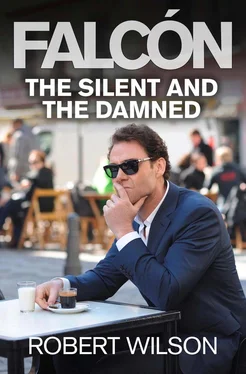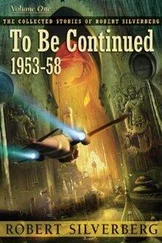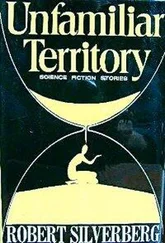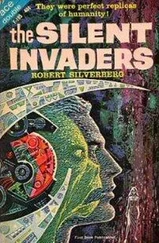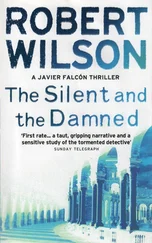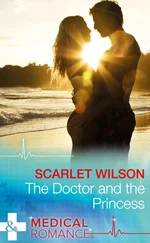Her photographs at first seemed to be about loneliness: old people sitting on park benches, a young man standing at a rail overlooking a river, a woman in a towelling robe on a roof terrace in Manhattan. Gradually, as the camera’s eye moved closer, other things became evident: contentment on the old person’s face, possibility in the young man’s eyes, dreaminess in the woman’s face.
‘They’re facile, those early ones,’ said Maddy. ‘The idea was just a gimmick. I was only twenty-two. I didn’t know anything. Take a look at these –’
She handed him six black-and-white prints. The first three showed Rafael Vega in a white shirt and dark trousers, hands in pockets, standing on his well-clipped lawn. The camera was looking over his shoulder at his profile. His jaw was tight. Falcón waited for the shot to tell him something. Then he saw what it was.
‘He’s barefoot.’
‘That was 14th January this year.’
‘What was he doing?’
‘That’s not the point…remember,’ she said. ‘I’m not a snoop. Look at these. They’re taken down by the river. I go there a lot. I can sit with a big zoom lens on a tripod and people will stop on Calle Bétis and the bridges. I pick up a lot of contemplative looks. People go to the river for a reason…don’t they?’
The three shots she gave him were close-ups of head and shoulders. In the first Rafael Vega was wincing, in the second he was gritting his teeth, eyes screwed up, and in the third his mouth had cracked open.
‘He’s in pain,’ said Falcón.
‘He was crying,’ said Maddy. ‘There’s saliva at the corners of his mouth.’
He gave her back the photos. They were intrusive and he didn’t like them. He returned her book to the shelf.
‘And you didn’t think any of this was worth mentioning before?’
‘This is my work,’ she said. ‘This is how I express myself. I wouldn’t have shown you them if Marty hadn’t pushed me.’
‘Even though it could have a bearing on what happened in the Vegas’ house last night?’
‘I answered your questions – the last time we spoke, how the Vegas got along, whether he was having an affair. I just didn’t relate any of that to these shots because the point is that we should never know about them. They were not taken for the purposes of investigating causes.’
‘Why were they taken?’
‘These are shots of people suffering in intensely private moments, but out in the open. They have chosen not to hide in their homes but to walk it out of themselves in the presence of other human beings.’
Falcón remembered the hours he’d spent walking the streets of Seville in the past fifteen months. The contemplation of the fundamentals of his existence were too unsettling for the confines even of his sprawling house on Calle Bailén. He’d walked it all out of himself, stared it all into the sloe-black waters of the Guadalquivir, shaken it all off into the empty sugar sachets and cigarette ends on the floors of anonymous bars. It was true. He had not sat at home with his horrors piling up in his mind. There was solace in the wordless company of strangers.
Maddy was standing close to him. He was aware of her smell, the body under its thin sheath of silk, the exquisite pressure, the flimsiness of the barrier. She hovered, expectant, confident of her ability. Her white throat trembled as she swallowed.
‘We should go back downstairs,’ said Falcón.
‘There was something else I wanted to show you,’ she said, and led him across the corridor to another bedroom, which had a bare tiled floor and more of her photographs on the walls.
His attention was grabbed by a colour shot of a blue pool with a white necklace of tiles in a green lawn with a purple flame of bougainvillea in one corner and a white cushioned lounger in the other. A woman sat on the lounger in a black bathing costume under a red hat.
‘That’s Consuelo Jiménez,’ he said.
‘I didn’t know you knew her,’ said Maddy.
He went to the window. Across the road Consuelo’s garden was visible.
‘I had to get up on the roof for the angle,’ she said.
To his left he could see the Vegas’ entrance and driveway through the trees.
‘Do you know what time Sr Vega came back home last night?’
‘No, but it was rarely before midnight.’
‘You wanted to show me something?’ he said, turning back in to the room.
On the back wall behind the door, framed in black, was a print 75 cm by 50 cm of a man staring down from a bridge, under which it was clear his whole life was flowing. The features of the man did not compute at first. There was too much going on in the face. It was a shock for him to discover that he was looking at himself – a Javier Falcón he’d never seen before.
Wednesday, 24th July 2002
Back at the crime scene next door everybody had moved upstairs into the Vegas’ bedroom. Calderón had already signed off the levantamiento del cadáver for Sr Vega. The body was in a bag on a trolley in the hallway, waiting in the air conditioning to be loaded on to the ambulance and taken down to the Instituto Anatómico Forense on Avenida Sánchez Pizjuan.
The crime scene team were now congregated around the bed, looking down at Sra Vega, hands behind backs, solemn as if in prayer. The pillow was off her face and had been put in a plastic bag and leaned against the wall. Her mouth was open. The top lip and teeth were set in a snarl as if she’d left life bitterly. Her lower jaw was off centre.
‘She’d been hit once with the right hand,’ Calderón explained to Falcón. ‘The jaw’s dislocated…Probably knocked her unconscious. The Médico Forense thinks it was done with the flat of the hand, rather than a closed fist.’
‘What was the time of death?’
‘Same time as the husband: three, three thirty. He can’t be more accurate than that.’
‘Sra Jiménez said she used sleeping pills, two a night, to knock herself out. She must have woken up and had to be subdued before being suffocated. Is there any link between this death and Sr Vega’s yet?’
‘Not until I get them back to the Instituto,’ said the Médico Forense.
‘We’re hoping for some sweat or saliva on the upper side of the pillow,’ said Felipe.
‘This strengthens your case for an unknown murderer, Inspector Jefe,’ said Calderón. ‘I can’t see a husband dislocating his wife’s jaw.’
‘Unless, as I said, she woke up, perhaps got out of bed just as Sr Vega came in full of intent. She might have seen something different in him, become hysterical and he felt the need for violence,’ said Falcón. ‘I’m still keeping an open mind on this. Any ghosts in here?’
‘Ghosts?’ asked Calderón.
‘Something that makes a crime scene look “off”, not as it should be,’ said Falcón. ‘We all had the same feeling about Sr Vega’s body in the kitchen. Somebody else had been there.’
‘And here?’
Jorge shrugged.
‘She was murdered,’ said Felipe. ‘Nobody was trying to make this scene look like anything else. Whether it was Sr Vega remains to be seen. All we’ve got is the pillow.’
‘What did the neighbours have to say?’ asked Calderón, moving away from the others in the room.
‘We have some conflicting views,’ said Falcón. ‘Sra Jiménez has known Sr Vega for some time and did not consider him the suicidal type. She also noted the new car and said he was about to go on holiday to San Diego. Sra Krugman, however, showed me these photographs, taken recently, of Sr Vega in private, clearly distressed and possibly unstable. She let me have this contact sheet.’
Calderón looked over the images, frowning.
‘He’s barefoot in his garden in January,’ said Falcón. ‘And there’s another one of him crying down by the river.’
Читать дальше
